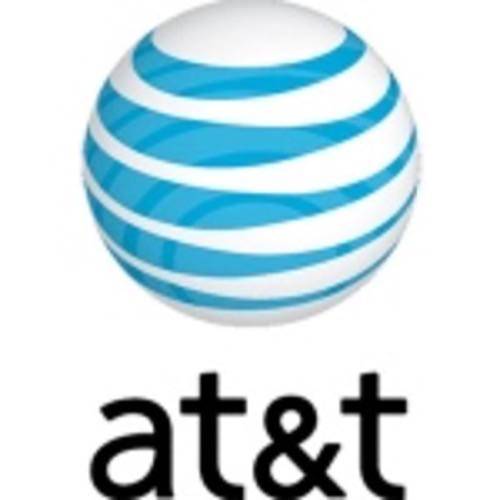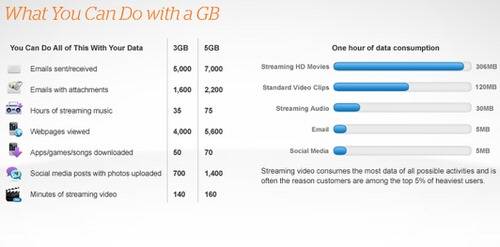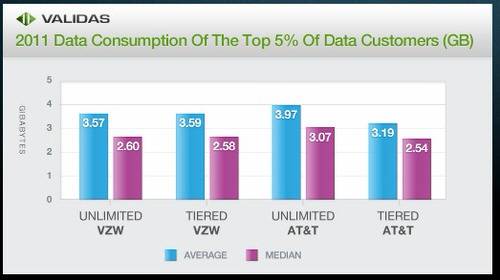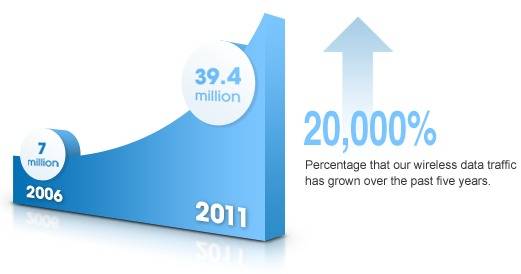When it comes to data throttling, there is no way that U.S. mobile carriers can win the war of public opinion. That goes double for AT&T and its PR fiasco over the last couple of weeks over its throttling of unlimited data plans. A California man won an $850 settlement in the Simi Valley small claims court, opening the door for thousands of similar court cases to be brought about the country. Several petitions on Change.org have been started to challenge the throttling policy, including one from Yonker’s New York yoga instructor Jane Foody that has about 11,400 signatures since it was launched.

AT&T’s Statement
AT&T announced today a clarification to its data throttling policy for users on unlimited plans. Customers using AT&T’s 3G network will see their data speeds be cut after reaching 3 gigabytes. Users on the carrier’s 4G LTE network will see speeds throttled after 5GB. The changes to the policy are a reaction to backlash against the company after user speeds were greatly diminished after 2GB or so of use. AT&T’s throttling policy originally stated that it would reduce the speeds of the top 5% of users in a given area.
Here is AT&T’s statement on the clarifications to its data throttling plan.
With mobile data usage continuing to skyrocket and the availability of spectrum scarce, AT&T, like other wireless companies, manages its network in the most fair way possible so that we can provide the best possible mobile broadband experience for all our customers.
How we’re managing the network only affects a small minority of the heaviest smartphone data users still on unlimited plans. Put another way, this does not impact more than 95 percent of our smartphone customers.
Our unlimited plan customers have told us they want more clarity around how the program works and what they can expect. Here’s what customers need to know:
- Customers with a 3G or 4G smartphone – who also still have our unlimited data plan – will see speeds reduced if they use 3GB (gigabytes) of data or more in a billing cycle. Speeds will return to normal at the start of the next billing cycle. For context, less than 5 percent of smartphone customers use more than 3GB per month.
- For customers with a 4G LTE smartphone – who also still have our unlimited data plan – data speeds will be reduced if usage is 5GB (gigabytes) or more in a billing cycle. Speeds will return to normal at the start of the next billing cycle.
Customers will get a text message from us before experiencing a change in speed.
That’s because data activity over Wi-Fi does not count against the threshold for unlimited customers that triggers reduced data speeds or against customers’ tiered data plans. Customers can find out more at www.att.com/datainfo

AT&T’s Need to Throttle
Over the past few weeks, users were starting to see their speed throttled after about 2 GB or so of use. Users started complaining about was that their devices became virtually unusable after throttling. AT&T’s tiered plans offer a 3 GB rate for $30 that is not throttled after hitting the limit but rather the carrier charges $10 for every GB of data used.
AT&T insists that the throttling policy is not a way to force users from legacy unlimited plans to tiered plans:
“Honestly, we are all about making sure that there are a lot of options for our customers. You have always seen that in our handset offerings. We make sure there are choices at a multitude of OSes and a multitude of price points. We have always had a lot of data plans for people to choose from as well. I think that what we would say to a customer is go online and you can look at your data use for the current month and historically and you can make the choice for what makes sense to you,” said AT&T spokesperson Seth Bloom.
“If you want an unlimited plan and you think that you will never go over 3 gigs or whatever, that is a great place for you and that is terrific. If not, as you have heard on our quarterly calls, we have a lot of people choosing the tiered plans because they know that if there are months where their usage goes up and use it a lot they can do so without having their speed slowed.”
AT&T also increased the speed of for users that have been throttled in recent weeks. Wireless industry watcher Broadband Report reported that users were seeing faster speeds and a source confirmed to ReadWriteWeb that was indeed the case.
A study from Validas, a company that specializes in wireless bill analysis and plan recommendations, found that the difference in data usage between tiered and unlimited users was limited. It analyzed 55,000 AT&T bills and found that on average the top 5% of tiered users consumed 3.97 GB of data a month against 3.07 GB for unlimited users. The sample size for Validas might be a small in comparison with the overall size of AT&T’s subscription base, which is well over 100 million users, 17 million of which are on unlimited plans.

Many people do not think that throttling is necessary at all. Openet’s director of wireless and broadband solutions Gary Rieschick says that the top 5% of users tend to be the early adopters that are more likely to spend money on value-added services that a carrier offers.
“Throttling, in its current form, is not long for this world. In the past, the industry opinion was that throttling helped manage congestion, but why throttle someone if they’re in a lightly populated area, during off peak periods, etc? The top 5%, so-called excessive users, or heavy users lower down on the chain, are considered to be early adopters of new services and are often likely to pay premium prices for data access. Running them off a network through throttling just doesn’t make good business sense,” Rieschick said.
“The reality is that it’s not the excessive users that cause congestion but the aggregate number of many subscribers (e.g. heavy, moderate and light) that cause congestion. If congestion is the problem an operator is looking to solve, employing smarter network software based on location and other factors, rather than across the board throttling, is the smart move, and what is going to be in place at the majority of operators sooner rather than later.”
AT&T’s Tantrum?
It is clear that AT&T is frustrated with the spectrum policies of the Federal Communication Commission and the fact that the carrier’s $39 billion acquisition of T-Mobile was turned down by the Department of Justice. AT&T CEO Randall Stephenson came flat out and said as much in the company’s latest quarterly earnings call.
“Despite all the speeches from the FCC, we are still all waiting. The last significant spectrum auction was nearly five years ago now. This FCC has made it abundantly clear that they will not allow significant M&A to help bridge these delays in clearing up new spectrum. So, in absence of options, our company and others have taken the logical step to make smaller transactions to acquire the spectrum we need to meet demand,” Stephenson said.
The carrier claims that throttling the top 5% of users is a way to optimize efficiency on its network. Yet, many of AT&T’s decisions since the T-Mobile acquisition failed have seemed like a way to punish users and developers as if to prove a point to the FCC. For instance, the recent plan to “let” application developers pay for the data used in their apps as opposed to making consumers pay for it.
“All I can say is that the policies we have in place are only a response to the reality of the way the technology is these days, to be honest. Mobile data usage is skyrocketing, you know that. Mobile spectrum is limited, it is a scarce resource. Knowing that, not only AT&T but all of the wireless carriers need to manage their network and they have to find fair ways to do it,” Bloom said.
“The idea is that we need to provide the best mobile broadband experience for everybody. There are a lot of different ways to do that and we’ve always looked at making Wi-Fi available in a very aggressive way, probably mores than our competitors. We’ve invested huge amounts in our network and our spectrum and cell sites and backhaul. We have the need, as does everybody, to put many different practices together in the network and that is what we are talking about today.”

Stepheson said during the earnings call that the carrier plans on pumping $20 billion into its network in 2012 over 150,000 different improvements. Those projects will be to create more wireless towers, increase backhaul and make the entire network more efficient. That will also include bringing LTE to more cities across the country.
AT&T’s Message to Consumers
The $850 small claims court decision in California could be a sticky point for the carrier. Last year the U.S. Supreme Court announced a decision where consumers on contracts could not file class action lawsuits against companies. That leaves regional courts to deal with cases such as Matthew Spaccarelli’s in which he researched his position for three months before filing his suit on Jan. 9, 2012.
Yet, the devil is in the details of Spaccarelli’s suit. This is certainly not your average user. Spaccarelli jailbroke his iPhone and used it to tether to his iPad as well as hooked up his device to a projector and watched movies streaming over Netflix on the carrier’s network. Spaccarelli was reaching nearly 15-18 GB a month of data use, well above the average for the top 5% on AT&T’s network.
As for Foody’s petition (and 50 other similar petitions on Change.org), Bloom responded:
“I think what I would tell you is that all of those forums, and there are many others, are ways that we listen to what our customers are saying. That is reflected in all of the policies that we roll out. It helps us figure out our product mix, it helps us figure out everything. So, you can see if you go to our Facebook wall in how we engage with customers that are happy and customers that are not happy. All of that is feedback that with a company the size of ours, you can imagine a lot of feedback and it all goes in to how we operate,” Bloom said.









